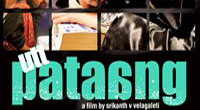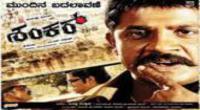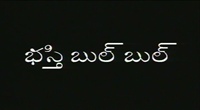
Sannyasa (sa?ny?sa) is the life stage of renunciation within the Hindu philosophy of four age-based life stages known as ashramas, with the first three being Brahmacharya (bachelor student), Grihastha (householder) and Vanaprastha (forest dweller, retired). Sannyasa is traditionally conceptualized for men or women in late years of their life, but young brahmacharis have had the choice to skip the householder and retirement stages, renounce worldly and materialistic pursuits and dedicate their lives to spiritual pursuits.
Sannyasa is a form of asceticism, is marked by renunciation of material desires and prejudices, represented by a state of disinterest and detachment from material life, and has the purpose of spending one's life in peaceful, love-inspired, simple spiritual life. An individual in Sanyasa is known as a Sannyasi (male) or Sannyasini (female) in Hinduism, which in many ways parallel to the Sadhu and Sadhvi traditions of Jain monasticism, the bhikkhus and bhikkhunis of Buddhism and the monk and nun traditions of Christianity, respectively.
Sannyasa has historically been a stage of renunciation, ahimsa (non-violence) peaceful and simple life and spiritual pursuit in Indian traditions. However, this has not always been the case. After the invasions and establishment of Muslim rule in India, from the 12th century through the British Raj, parts of the Shaiva and Vaishnava ascetics metamorphosed into a military order, to rebel against persecution, where they developed martial arts, created military strategies, and engaged in guerrilla warfare. These warrior sanyasis (ascetics) played an important role in helping European colonial powers establish themselves in India.
Contents
Etymology and synonyms
Sa?ny?sa in Sanskrit nyasa means purification, sannyasa means "Purification of Everything". It is a composite word of sa?- which means "together, all", ni- which means "down" and ?sa from the root as, meaning "to throw" or "to put". A literal translation of Sanny?sa is thus "to put down everything, all of it". Sannyasa is sometimes spelled as Sanyasa.
The term Sa?nyasa makes appearance in the Samhitas, Aranyakas and Brahmanas, the earliest layers of Vedic literature (2nd millennium BCE), but it is rare. It is not found in ancient Buddhist or Jaina vocabularies, and only appears in Brahmanical literature of the 1st millennium BCE, in the context of those who have given up ritual activity and taken up non-ritualistic spiritual pursuits discussed in the Upanishads. The term Sannyasa evolves into a rite of renunciation in ancient Sutra texts, and thereafter became a recognized, well discussed stage of life (Ashrama) by about the 3rd and 4th century CE.
In Dravidian languages, "sannyasi" is pronounced as "sanyasi" and also "sannasi" in colloquial form. Sanyasis are also known as Bhiksu, Pravrajita/Pravrajit?, Yati, Sramana and Parivrajaka in Hindu texts.
History
Jamison and Witzel state early Vedic texts make no mention of Sannyasa, or Ashrama system, unlike the concepts of Brahmacharin and Grihastha which they do mention. Instead, Rig Veda uses the term Antigriha (????????) in hymn 10.95.4, still part of extended family, where older people lived in ancient India, with an outwardly role. It is in later Vedic era and over time, Sannyasa and other new concepts emerged, while older ideas evolved and expanded. A three-stage Ashrama concept along with Vanaprastha emerged about or after 7th Century BC, when sages such as Y?jñavalkya left their homes and roamed around as spiritual recluses and pursued their Pravrajika (wanderer) lifestyle. The explicit use of the four stage Ashrama concept, appeared a few centuries later.
However, early Vedic literature from 2nd millennium BC, mentions Muni (????, monks, mendicants, holy man), with characteristics that mirror those found in later Sannyasins and Sannyasinis. Rig Veda, for example, in Book 10 Chapter 136, mentions munis as those with Kesin (??????, long haired) and Mala clothes (??, soil-colored, yellow, orange, saffron) engaged in the affairs of Mananat (mind, meditation). Rigveda, however, refers to these people as Muni and Vati (???, monks who beg).
?????????? ???? ???? ???? ??????? ????? ? ???? ?????? ????????? ?????? ????????????? ??? ????? ???????? ??????? ???? ??? ? ????????? ??????? ????? ????????? ??????? ???
He with the long loose locks (of hair) supports Agni, and moisture, heaven, and earth; He is all sky to look upon: he with long hair is called this light. The Munis, girdled with the wind, wear garments of soil hue; They, following the wind's swift course, go where the Gods have gone before.
—?Rig Veda, Hymn 10.CXXXVI.1-2
These Munis, their lifestyle and spiritual pursuit, likely influenced the Sannyasa concept, as well as the ideas behind the ancient concept of Brahmacharya (bachelor student). One class of Munis were associated with Rudra. Another were Vratyas.
Lifestyle and goals
Hinduism has no formal demands nor requirements on the lifestyle or spiritual discipline, method or deity a Sanyasin or Sanyasini must pursue – it is left to the choice and preferences of the individual. This freedom has led to diversity and significant differences in the lifestyle and goals of those who adopt Sannyasa. There are, however, some common themes. A person in Sannyasa lives a simple life, typically detached, itinerant, drifting from place to place, with no material possessions or emotional attachments. They may have a walking stick, a book, a container or vessel for food and drink, often wearing yellow, saffron, orange, ochre or soil colored clothes. They may have long hair and appear disheveled, and are usually vegetarians. Some minor Upanishads as well as monastic orders consider women, children, students, fallen men (those with a criminal record) and others as not qualified to become Sannyasa; while other texts place no restrictions. The dress, the equipage and lifestyle varies between groups. For example, Sannyasa Upanishad in verses 2.23 to 2.29, identifies six lifestyles for six types of renunciates. One of them is described as living with the following possessions,
Pot, drinking cup and flask – the three supports, a pair of shoes,
a patched robe giving protection – in heat and cold, a loin cloth,
bathing drawers and straining cloth, triple staff and coverlet.—?Sannyasa Upanishad, 1.4
Those who enter Sannyasa may choose whether they join a group (mendicant order). Some are anchorites, homeless mendicants preferring solitude and seclusion in remote parts, without affiliation. Others are cenobites, living and traveling with kindred fellow-Sannyasi in the pursuit of their spiritual journey, sometimes in Ashramas or Matha/Sangha (hermitages, monastic order).
Most Hindu ascetics adopt celibacy when they begin Sannyasa. However, there are exceptions, such as the Saiva Tantra school of asceticism where ritual sex is considered part of liberation process. Sex is viewed by them as a transcendence from a personal, intimate act to something impersonal and ascetic.
The goal
The goal of the Hindu Sannyasin is moksha (liberation). The idea of what that means varies from tradition to tradition.
Who am I, and in what really do I consist? What is this cage of suffering?
—?Jayakhya Samhita, Verse 5.7
For the Bhakti (devotion) traditions, liberation consists of union with the Divine and release from Sa?s?ra (rebirth in future life); for Yoga traditions, liberation is the experience of the highest Sam?dhi (deep awareness in this life); and for the Advaita tradition, liberation is jivanmukti – the awareness of the Supreme Reality (Brahman) and Self-realization in this life. Sannyasa is a means and an end in itself. It is a means to decreasing and then ultimately ending all ties of any kind. It is a means to the soul and meaning, but not ego nor personalities. Sannyasa does not abandon the society, it abandons the ritual mores of the social world and one's attachment to all its other manifestations. The end is a liberated, content, free and blissful existence.
The behaviors and characteristics
The behavioral state of a person in Sannyasa is described by many ancient and medieval era Indian texts. Bhagavad Gita discusses it in many verses, for example:
?????? ? ????????????? ?? ? ???????? ? ???? ????? ? ????????????? ?? ??????? ???? ????????????????? ??-??
He is known as a permanent Sannyasin who does not hate, does not desire, is without dualities (opposites). Truly, Mahabaho (Arjuna), he is liberated from bondage.
—?Bhagavad Gita, Hymn 5.3
Other behavioral characteristics, in addition to renunciation, during Sannyasa include: ahimsa (non-violence), akrodha (not become angry even if you are abused by others), disarmament (no weapons), chastity, bachelorhood (no marriage), avyati (non-desirous), amati (poverty), self-restraint, truthfulness, sarvabhutahita (kindness to all creatures), asteya (non-stealing), aparigraha (non-acceptance of gifts, non-possessiveness) and shaucha (purity of body speech and mind). Some Hindu monastic orders require the above behavior in form of a vow, before a renunciate can enter the order. Tiwari notes that these virtues are not unique to Sannyasa, and other than renunciation, all of these virtues are revered in ancient texts for all four Ashramas (stages) of human life.
Baudhayana Dharmas?tra, completed by about 7th century BC, states the following behavioral vows for a person in Sannyasa
These are the vows a Sannyasi must keep –
Abstention from injuring living beings, truthfulness, abstention from appropriating the property of others, abstention from sex, liberality (kindness, gentleness) are the major vows. There are five minor vows: abstention from anger, obedience towards the guru, avoidance of rashness, cleanliness, and purity in eating. He should beg (for food) without annoying others, any food he gets he must compassionately share a portion with other living beings, sprinkling the remainder with water he should eat it as if it were a medicine.
—?Baudhayana, Dharmas?tra, II.10.18.1-10
Types
Ashrama Upanishad identified various types of Sannyasi renouncers based on their different goals: Kutichaka – seeking atmospheric world; Bahudaka – seeking heavenly world; Hamsa – seeking penance world; Paramahamsa – seeking truth world; and Turiyatitas and Avadhutas seeking liberation in this life.
In some texts, such as Sannyasa Upanishad,[21] these were classified by the symbolic items the Sannyasins carried and their lifestyle. For example, Kutichaka sannyasis carried triple staffs, Hamsa sannyasis carried single staffs, while Paramahamsas went without them. This method of classification based on emblematic items became controversial, as anti-thematic to the idea of renunciation. Later texts, such as Naradaparivrajaka Upanishad stated that all renunciation is one, but people enter the state of Sannyasa for different reasons – for detachment and getting away from their routine meaningless world, to seek knowledge and meaning in life, to honor rites of Sannyasa they have undertaken, and because he already has liberating knowledge.[40]
- Other classifications
There were many groups of Hindu, Jain and Buddhist Sannyasis co-existing in pre-Maurya Empire era, each classified by their attributes, such as:[41] Achelakas (without clothes), Ajivika, Avir
Watch movie Sanyasi online on Amazon
Watch movie Sanyasi online
Watch The Movie On PrimeJaan Full HD Movie Download

Kites Full HD Movie Download

Daku Rani Himmatwali Full HD Movie Download

Meri Jung Full HD Movie Download

Vinashak-Destroyer Full HD Movie Download

Waqt Ki Deewar Full HD Movie Download

Utt Pataang Full HD Movie Download

Karisma Kali Ka Full HD Movie Download

Shankar IPS Full HD Movie Download

7 Khoon Maaf Full HD Movie Download

Aval Sumangalithan Full HD Movie Download

Khaidi Inspector Full HD Movie Download

Lakhan Full HD Movie Download

Chinna Kannamma Full HD Movie Download

Enga Ooru Paatukkaaran Full HD Movie Download

Guru Sishyan Full HD Movie Download

Delhi Simham Full HD Movie Download

Prema Paga Full HD Movie Download

Basthi Bul Bul Full HD Movie Download

S.P.Shankar Full HD Movie Download

Ninaivil Nindraval Full HD Movie Download

Download latest Movie from bollywood
- 1> baaghi 3
- 2> THE SKY IS PINK MOVIE FULL STORY AND REVIEW
- 3> Luka Chuppi
- 4> TO ALL THE BOYS I’VE LOVED BEFORE
- 5> Kabir Singh
- 6> Street Dancer 3D
- 7> Simmba
- 8> Gone Girl
- 9> The Girl Who Lived
- 10> Ludo
- 11> DILWALE DULHANIA LE JAYENGE
- 12> GUILTY
- 13> The Godfather
- 14> Adventures of Rusty
- 15> Sooryavanshi
- 16> Satyameva Jayate 2
- 17> Thappad
- 18> Bhool Bhulaiyaa 2
- 19> KGFChapter 2
- 20> Mardaani 2
- 21> Pinjar
- 22> Shivaji maharaj
- 23> Ek Villian 2
- 24> Hungama 2
- 25> Divergent
- 26> Mumbai Saga
- 27> The Internship
- 28> HIT (telugu)
- 29> Panga
- 30> The perfect date
- 31> 16 December
- 32> Gopala Gopala (Telugu)
- 33> Brahmastra
- 34> Gangubai Kathiawadi
- 35> Manmadhudu
- 36> Nenu local
- 37> Mahanati
- 38> Shatamanam bavathi
- 39> Lagaan
- 40> After
- 41> MOM
- 42> Shamshera
- 43> Raguvaran BTech
- 44> Khakee
- 45> The villain
- 46> OM
- 47> Mr. perfect
- 48> Bueatifull mind
- 49> Hichki
- 50> Gabbar Singh
- 51> Jogi
- 52> Before Sunrise
- 53> Before Sunset
- 54> Before Midnight
- 55> The Big Bull
- 56> Top Gun: Maverick
- 57> The Purge
- 58> The Sky is Pink
- 59> Laxmmi Bomb
- 60> Sadak 2
- 61> Sufna
- 62> Prithviraj
- 63> PK
- 64> Coolie No 1(2020)
- 65> Black Widow
- 66> Dear Zindagi
- 67> Dil Bechara
- 68> PHIR HERA PHERI
- 69> WAR
- 70> Dostana
- 71> RRR: Roudram Ranam Rudhiram
- 72> Maidan
- 73> Dabbang 3
- 74> Chhalaang
- 75> life as we know it
- 76> SherShaah
- 77> Sandeep Aur Pinky Faraar
- 78> Event Horizon
- 79> 83
- 80> Radhe: Your Most Wanted Bhai
- 81> Gunjan Saxena: The Kargil Girl
- 82> Mr India
- 83> Vivah
- 84> Anokha Bandhan
- 85> Ghost
- 86> Bhoot: Part One - The Haunted Ship
- 87> Haseen Dilruba
- 88> Laal Singh Chaddha
- 89> Qismat
- 90> Rajput
- 91> Drive
- 92> Dil Chahta Hai
- 93> Dil Ki Baazi
- 94> Dil Ka Rishta
- 95> Teesri Manzil
- 96> Dil
- 97> Love Aaj Kal
- 98> Khaali Peeli
- 99> Bunty Aur Babli 2
- 100> Atrangi Re
- 101> Gulabo Sitabo
- 102> Jodi
- 103> Suraj Pe Mangal Bhari
- 104> Deewana
- 105> Attack
- 106> Sardar Udham Singh
- 107> Toofan
- 108> THE LOVEBIRDS
- 109> Jersey
- 110> Ginny Weds Sunny
- 111> Thalaivi
- 112> Shiddat
- 113> Angels vs Zombies
- 114> Koi Mil Gya
- 115> Thank God
- 116> Bhuj: The Pride of India
- 117> Hum Aapke Hain Kaun
- 118> The Platform
- 119> Bird Box
- 120> Roohi Afzana
- 121> Torbaaz
- 122> Nikamma
- 123> World War Z
- 124> Extraction
- 125> Train to Busan
- 126> Life of Pi
- 127> SHAADI MEIN JROOR AANA
- 128> Himmat Aur Mehnat
- 129> To All The Boys: P.S. I Still Love You
- 130> Mimi
- 131> Good Newwz
- 132> Shubh Mangal Zyada Saavdhan
- 133> Raabta
- 134> Harry Potter and the Philosopher's Stone
- 135> Harry Potter and the Chamber of Secrets
- 136> Chhapaak
- 137> War of the Worlds
- 138> Harry Potter and the Prisoner of Azkaban
- 139> Harry Potter and the Goblet of Fire
- 140> MURDER MYSTERY
- 141> Shakuntala Devi
- 142> Bachchan Pandey
- 143> Jayeshbhai Jordar
- 144> Sheer Qorma
- 145> Saina
- 146> 'O' Pushpa I hate tears
- 147> Kedarnath
- 148> MS Dhoni The Untold Story
- 149> Chhichhore
- 150> Badhaai Ho
- 151> Unstoppable
- 152> Oz the Great And Powerful
- 153> The Girl on the Train
- 154> Haathi Mere Saathi 2020
- 155> The Conjuring: The Devil Made Me Do It
- 156> Gandhi Se Pehle Gandhi
- 157> The Song of Scorpions
- 158> Srimanthudu
- 159> Hello Guru Prema Kosame
- 160> Beauty and The Beast
- 161> Black Panther
- 162> Charlie and the Chocolate Factory
- 163> Bole Chudiyan
- 164> Fidaa
- 165> Duvvada Jagannadham
- 166> Bruce Lee: The Fighter
- 167> Hyper
- 168> Yaara
- 169> Red (2020)
- 170> Shivam
- 171> That Is Mahalakshmi
- 172> Nishabdham
- 173> Aashram 2020 web series
- 174> Laxmii
- 175> Mismatched
- 176> STUDENT OF THE YEAR 2
- 177> NAIL POLISH
- 178> Ramprasad Ki Tehrvi
- 179> KAAGAZ
- 180> 12 o Clock
- 181> The Power
- 182> bolo hau
- 183> Tribhanga
- 184> JAMUN
- 185> Madam Chief Minister
- 186> Maasaab
- 187> Aadhaar
- 188> Tanhaji
- 189> Bhaagi 3
- 190> Bhootnath
- 191> MALANG
- 192> Jai Mummy Di
- 193> Haathi Mere Saathi 2021
- 194> Shakeela
- 195> Unpaused
- 196> Annayya
- 197> Vamsoddharakudu
- 198> Mrugaraju
- 199> Narasimha Naidu
- 200> Sankranti
- 201> Manasu Maata Vinadhu
- 202> Anjaane
- 203> Apaharan
- 204> Bachke Rehna Re Baba
- 205> Bewafaa
- 206> Roohi
- 207> Radhe
- 208> Zindagi Khoobsoorat Hai
- 209> Yeh Mohabbat Hai
- 210> Yeh Kya Ho Raha Hai?
- 211> The Tomorrow War
- 212> DehradunDiary
- 213> Meri Shaadi Karaoo
- 214> Matruu Ki Bijlee Ka Mandola
- 215> No One Killed Jesica
- 216> Aag Ka Goola
- 217> Eight Million Dollars
- 218> Three Hundred
- 219> Cats and Dog
- 220> Decoy
- 221> Gold Rush
- 222> You Have Got Mail
- 223> Final Destination three
- 224> Tofan
- 225> Jungle
